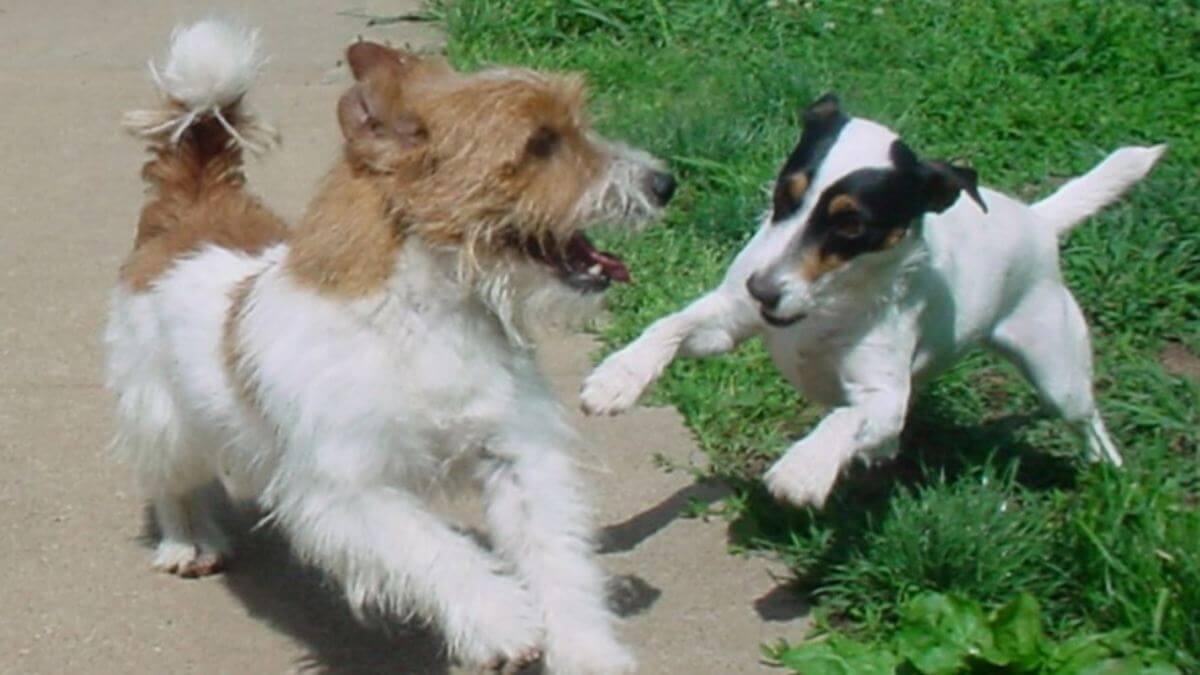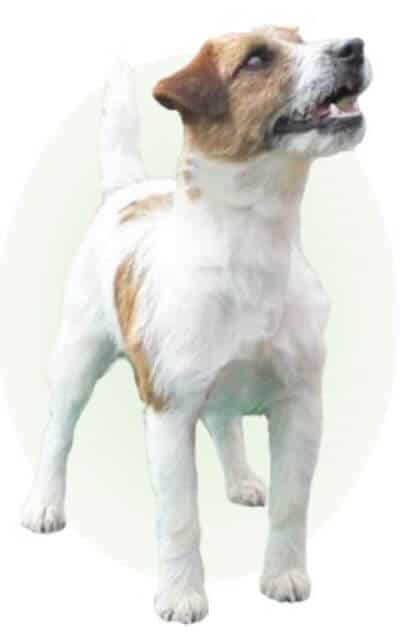
Home » An Overview on the Russell Terrier

This article was originally published in Showsight Magazine, April 2017 issue.
The era of foxhunting in England in the 1800s provided the necessity for the use of Sporting Hunt Terriers. These Terriers would work above and below ground to eradicate small vermin as well as to serve the fox hunting community bolting the fox from below ground so the hunt could continue chasing the fox. They were also very useful on farms to control the vermin population. The Russell Terrier was the ideal Sporting Terrier because of its small flexible chest, ideal size with its insatiable instinct to hunt vermin. Its small chest with a slimly built body made it possible for the Russell Terrier to traverse dens easily underground. Its flexible/compressible chest was very forgiving among the rocks and roots underground.
The Jack Russell, from which three variations derived, with extremely wide genetic backgrounds were imported into the US as early as 1911. The Parson Russell Terrier was the larger version in height, with the Russell being the smaller version. The third version was a miniature size with predominately dwarf characteristics imported to the US from Ireland. The miniatures were below 10″ but they were crossed on non-working breeds to minimize their size and hunting instincts for the pet market. The Australian National Kennel Council extended standard separates the three versions by stating above 12 inches is indicative of the Parson Russell Terrier, Russells being 10 to 12 inches and below ten inches indicates dwarf characteristics.
The stewards of the Russell have strived since 1995 to eliminate the dwarf characteristics and other deformities such as valgus and flexion carpus, benched legs not to mention other genetic diseases associated with dwarfism. The conformation of the Russell is that of an athletic sportsman being sturdy and slimly built. His leg and depth of brisket are equal in length when view from the side and his chest must never be below the elbow. The breed was bred for 100s of years for its ability to hunt effectively above and below ground never for bench. Its unique characteristic separating it from other breeds is its small spannable and flexible chest the hallmark of the breed. Where the fox goes, so must the Russell. The versatility of the breed depends on its body proportions defined in the standard as well as his indomitable spirit.
